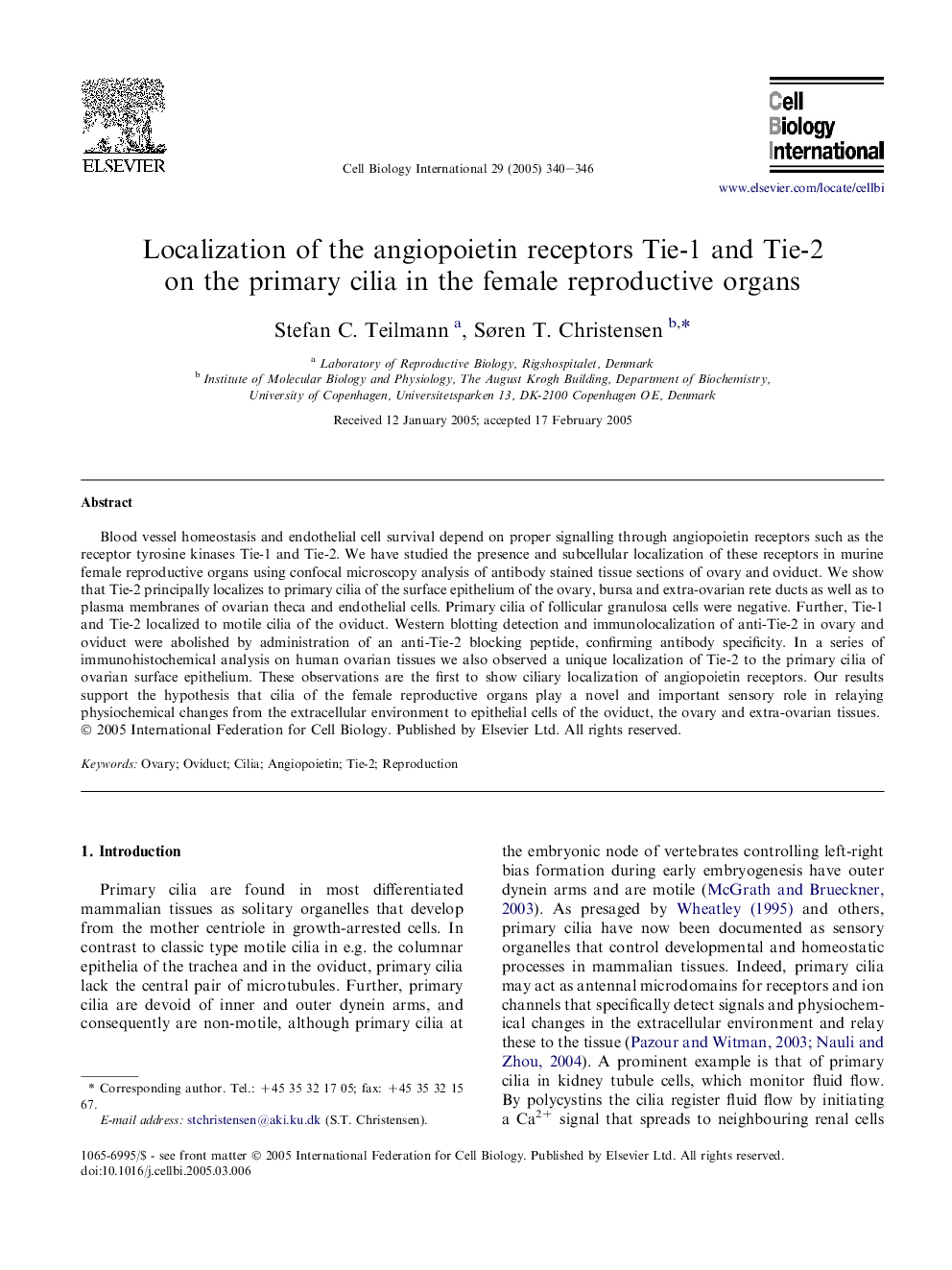| Article ID | Journal | Published Year | Pages | File Type |
|---|---|---|---|---|
| 10882075 | Cell Biology International | 2005 | 7 Pages |
Abstract
Blood vessel homeostasis and endothelial cell survival depend on proper signalling through angiopoietin receptors such as the receptor tyrosine kinases Tie-1 and Tie-2. We have studied the presence and subcellular localization of these receptors in murine female reproductive organs using confocal microscopy analysis of antibody stained tissue sections of ovary and oviduct. We show that Tie-2 principally localizes to primary cilia of the surface epithelium of the ovary, bursa and extra-ovarian rete ducts as well as to plasma membranes of ovarian theca and endothelial cells. Primary cilia of follicular granulosa cells were negative. Further, Tie-1 and Tie-2 localized to motile cilia of the oviduct. Western blotting detection and immunolocalization of anti-Tie-2 in ovary and oviduct were abolished by administration of an anti-Tie-2 blocking peptide, confirming antibody specificity. In a series of immunohistochemical analysis on human ovarian tissues we also observed a unique localization of Tie-2 to the primary cilia of ovarian surface epithelium. These observations are the first to show ciliary localization of angiopoietin receptors. Our results support the hypothesis that cilia of the female reproductive organs play a novel and important sensory role in relaying physiochemical changes from the extracellular environment to epithelial cells of the oviduct, the ovary and extra-ovarian tissues.
Related Topics
Life Sciences
Biochemistry, Genetics and Molecular Biology
Biophysics
Authors
Stefan C. Teilmann, Søren T. Christensen,
